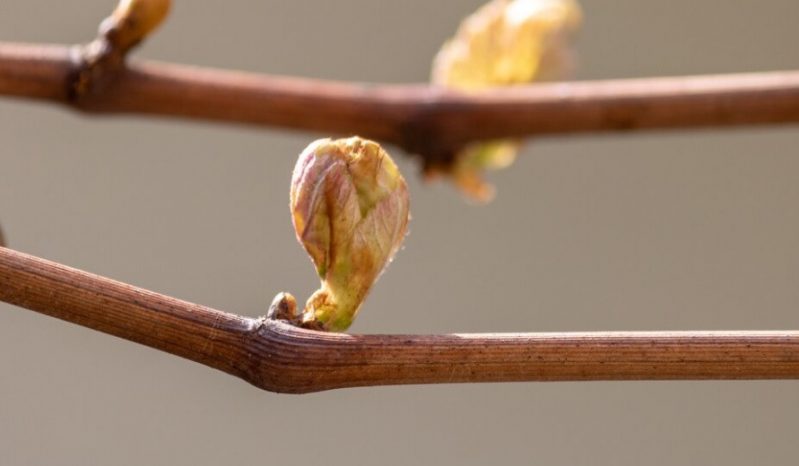You Can Turn Your Body Into a Tree With This Tree Burial Pod!

© wirestock / Freepik
Although we all know that death is inevitable, it is impossible not to think about what can happen once you are no longer in the world.
What actually happens to your body once you pass away? While you might think it is over by then, there is something else you can consider. And it is closely linked to tree burials.
What if there was a way for you to give life to something else? What if there was a way for your remains to nourish the earth and contribute to new life? This tree burial pod might have the answers for you.
What Is a Tree Burial Pod?
A tree burial pod involves placing a body in a pod beneath a new or existing tree, aiming to integrate the remains with the tree’s growth. The concept envisions a symbiotic relationship where the body nourishes the tree, fostering a union between the deceased and nature.

There are two forms of tree burial pods. The first option is a cremation pod designed for biodegradable urns containing ashes, which are buried beneath a tree to facilitate their decomposition and integration with the tree’s ecosystem.
The second option is a body pod where the entire body is buried within a pod beneath a tree. However, this concept remains theoretical and is not currently available anywhere globally, despite its appeal to many people.
Where Did the Idea Come From?
Italian designers Raoul Bretzel and Anna Citelli created Capsula Mundi, an egg-shaped organic casket named after the Latin phrase for “world’s capsule.” It serves as a burial option for both bodies and ashes.
Raoul Bretzel and Anna Citelli designed Capsula Mundi so that once buried, its biodegradable plastic shell breaks down, nourishing a sapling planted above it with nutrients from the remains. They aim to shift burial practices towards cemeteries filled with trees rather than tombstones, aiming to reduce waste and foster new life from death.

The inspiration for Capsula Mundi came in 2003 during Milan’s design fair, “Salone del Mobile,” where the two observed massive waste, including discarded furniture. They were struck by the lack of consideration for the future impact and utility of new designs. This prompted them to focus on projects with environmental benefits, including reimagining burial practices. They aimed to address the neglect of death as a natural part of life, often overlooked in design and consumerism.
How Does a Tree Burial Pod Work?
Cremation pods involve placing ashes along with other materials into a pod, which is then planted with a young tree above it. The pod biodegrades over time, but cremation ashes, which have a high pH, can be harmful to plants. Additional materials in the pod are meant to mitigate these effects. Thus, while the concept aims to integrate remains with tree growth, the ashes themselves do not directly nurture the tree due to their potentially damaging nature to plant life.
While this sounds like an amazing solution, whole-body burial pods, depicted in popular designs with a body in a fetal position inside an egg-shaped pod beneath a tree, do not currently exist as a practical reality.
What Does Science Have to Say?
The designers are introducing their initial product version for ashes, with a future model planned for bodies to be encapsulated in a fetal position. Soil bacteria decompose the bio-plastic first, allowing the ashes to gradually integrate with the soil without significantly altering its chemical balance.

Cremation, despite its popularity for ash burial, faces criticism due to its high energy consumption, as noted by DeBruyen. Additionally, older dental fillings can release mercury, prompting some crematoriums to install filters to mitigate pollution.
Do Others Agree?
Jacqueline Aitkenhead-Peterson, Associate Professor at Texas A&M University, recommends using more mature trees rather than seeds when planting on top of the Capsula, suggesting this approach is more effective.
When a body is buried, it decomposes within about a year, releasing nutrients rapidly into the soil. To maximize this nutrient transfer, planting a sufficiently large tree on top is crucial. Capturing and utilizing these nutrients effectively is also emphasized for environmental protection.
Is This Actually Good for the Environment?
DeBruyen believes traditional burials are problematic because they are anaerobic, meaning the remains are buried deep in sealed coffins, leading to incomplete degradation.
The pods facilitate oxygen flow and introduce carbon from starch-based bioplastic into the decomposition process, addressing the nitrogen-rich composition of human bodies, which requires carbon to balance microbial decomposition effectively.
What About Legality?
DeBruyen believes that options like the Capsula Mundi are scientifically viable for afterlife practices, supported by research. This reflects a growing environmental awareness that is also challenging cultural norms surrounding burials. She notes a recent surge in public interest in green burials over the past two years. While their providers have been growing steadily, there has been a notable increase in awareness and public interest in adopting green burial practices.

Kate Kalanick attributes the rise in green burial interest to baby boomers’ environmental consciousness and their concern over how their bodies will be handled after death. She reassures that green burials are legal throughout North America, with no significant governmental or legislative opposition in the US or Canada.
Raoul Bretzel mentions that in countries like Italy, this type of burial (referring to Capsula Mundi) is not currently permitted. He and others are gathering signatures for a petition to legalize it. However, they acknowledge that changing these rules will be a lengthy process.
How Much Do Tree Burial Pods Cost?
Tree burial pod costs vary significantly. Cremation pods typically range from a few hundred dollars, with additional costs for planting a young tree. Whole-body pods, which are not yet available, do not have a practical cost estimate at this time.
The Downsides
The main drawback of cremation pods is that they require cremation. It is environmentally unfriendly due to its reliance on fossil fuels. Each cremation emits carbon emissions equivalent to a 609-mile car journey. This contradicts the environmental goals of many nature lovers. They choose the tree burial option to minimize their impact on the environment.

The connection between the body and the tree in cremation pods is less direct than expected. Cremation ashes alone do not provide optimal nourishment for a tree. This makes it unclear whether it is the remains or the surrounding soil that truly nurtures and supports the tree’s growth.
Is There Another Option?
Human composting offers a direct and environmentally friendly alternative to burial and cremation. Through a 45-day process, the body is transformed into nutrient-rich soil. It can then yield a cubic yard of healthy soil that can be used to plant flowers or trees. This creates a beautiful memorial garden, allowing loved ones to connect with and celebrate life’s continuity.
Any additional soil from the human composting process can be donated to conservation efforts. Earth owns land on the Olympic Peninsula. That is where this soil helps nurture and restore the natural environment, surrounded by Giant Maple, Red Cedar, and Douglas-fir trees. This connection allows individuals to become part of the forest ecosystem, returning to nature in a meaningful way.
What about you? Would you ever consider the tree burial pod method?
You might also want to read: Bed Pods for Techs: Embracing the Silicon Valley Grind


